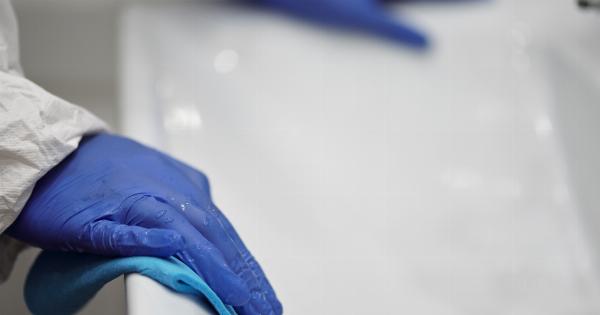Sterilization and disinfection are two common techniques used to control or eliminate microbial growth. Both techniques are important in maintaining a clean environment, and they differ in the level of effectiveness.
Sterilization
Sterilization is the process of killing or eliminating all microbial life, including bacteria, viruses, fungi, and spores. Sterilization is important in healthcare settings, where it is necessary to prevent the spread of infectious diseases.
Sterilization can be achieved through physical or chemical means.
Physical Sterilization Methods
Physical sterilization methods involve using heat, radiation, or filtration to kill or eliminate microbial life. Some of the common physical sterilization methods include the following:.
- Autoclaving: This involves exposing the material to high-pressure steam. The steam penetrates the material and kills all the microorganisms present.
- Dry heat sterilization: This involves exposing the material to high temperatures for a specific period of time. This method is used for materials that cannot withstand moist heat.
- Gamma radiation: This involves exposing the material to gamma radiation. The radiation kills all microorganisms present, but it can be expensive.
- Filtration: This involves passing the material through a filter that traps the microorganisms present. This method is commonly used for liquids or gases that cannot be sterilized through heat or radiation.
Chemical Sterilization Methods
Chemical sterilization methods involve using chemical agents to kill or eliminate microbial life. Some of the common chemical sterilization methods include the following:.
- Ethylene oxide (EO) sterilization: This involves exposing the material to EO gas. The gas penetrates the material and kills all the microorganisms present.
- Peracetic acid sterilization: This involves using a solution of peracetic acid to sterilize the material. The acid is effective against bacteria, viruses, and fungi.
- Hydrogen peroxide (H2O2) sterilization: This involves exposing the material to a vapor of H2O2. The vapor penetrates the material and kills all the microorganisms present.
Disinfection
Disinfection is the process of killing or eliminating most of the microorganisms present on a surface or material. Disinfection is not as effective as sterilization, as it does not kill all the microorganisms present.
Chemical Disinfectants
Chemical disinfectants are commonly used in healthcare settings to prevent the spread of infectious diseases. Some of the common types of chemical disinfectants include:.
- Chlorine: Chlorine is effective against bacteria and viruses, and it is commonly used to disinfect water and surfaces.
- Alcohol: Alcohol is effective against bacteria and viruses, but it is not effective against spores or fungi.
- Quaternary ammonium compounds: Quaternary ammonium compounds are effective against bacteria and viruses, but they are not effective against spores or fungi.
The Key Differences between Sterilization and Disinfection
The key differences between sterilization and disinfection are as follows:.
- Level of effectiveness: Sterilization kills or eliminates all microbial life, while disinfection only kills or eliminates most of the microorganisms present.
- Application: Sterilization is typically used in healthcare settings, while disinfection is commonly used in household or industrial settings.
- Equipment: Sterilization requires specialized equipment, such as an autoclave or gamma radiation equipment, while disinfection can be achieved through chemical agents or by using household bleach or alcohol.
- Time: Sterilization methods typically require more time than disinfection methods. Autoclaving, for example, can take several hours to complete.
Conclusion
Both sterilization and disinfection are important in controlling microbial growth and preventing the spread of infectious diseases.
However, sterilization is a more effective method of eliminating all microbial life, while disinfection is a more practical and cost-effective method of preventing the spread of most infectious diseases. The choice of which method to use depends on the specific application and the level of microbiological control required.































